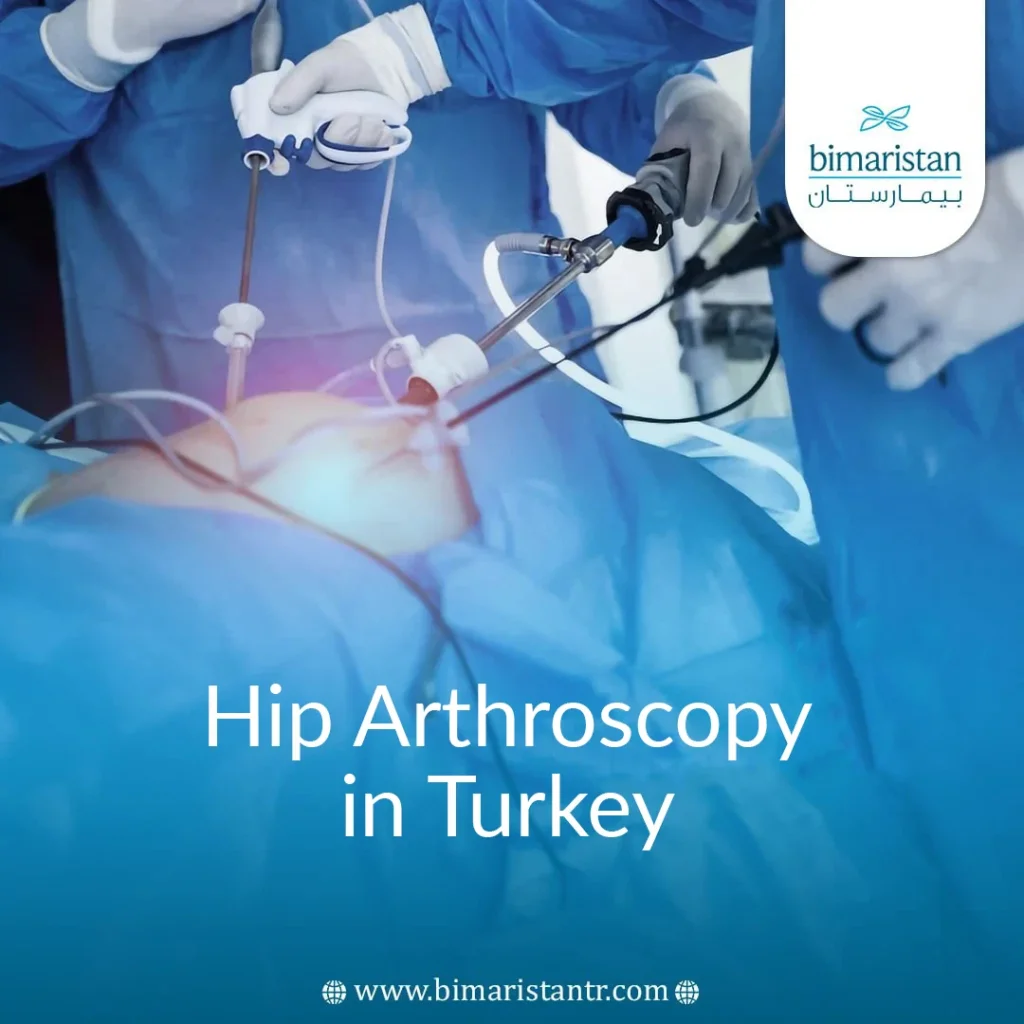Hip arthroscopy is a minimally invasive procedure performed by expert hip joint surgeons in Turkey. It is considered one of the best modern techniques.
Hip arthroscopy offers surgeons in Turkey new options for treating or halting the progression of various hip joint problems. Arthroscopic surgeries have become very common due to their minimal side effects, complications, and better cosmetic appearance compared to open surgery.
Hip arthroscopy operation has provided hope to the world and athletes to continue their careers in case of pelvic and hip injuries. Previous operations carried many undesired results due to difficulty intervening in the hip joints. Follow along in this article to learn more about this procedure and whether it benefits your condition.
Hip arthroscopy and the history of this procedure
The field of arthroscopy for hip and body joints, in general, has evolved significantly since the beginning of the twenty-first century. Physicians recognized the benefits of arthroscopy and its advantages in orthopedic and joint surgery, leading to extensive use of arthroscopic techniques after developing medical devices and methods for evaluating and expanding the joint space (which allows clearer visibility).
Especially after the success of knee and shoulder arthroscopic surgeries, doctors turned to applying this technique to diagnose various conditions and diseases affecting the hip joint and prepare for surgical intervention, whether total hip joint replacement, hip resurfacing via robotics, or even complete treatment for some hip joint disorders like hip joint inflammation (osteoarthritis of the hip) and many others.
Hip joint arthroscopy is performed by creating several incisions or openings (usually three incisions) of 1-2 cm each. Surgical instruments and a camera are inserted to provide a complete view of the hip joint. The instruments used vary depending on the condition being treated.
Why did modern medicine move to arthroscopic procedures?
Arthroscopy of joints, especially in sports injuries, has significantly succeeded in reducing the long recovery period associated with open joint surgeries. Athletes want to return to their sports activities as quickly as possible, a need fulfilled by hip and joint arthroscopy.
Additionally, the cost of arthroscopic procedures is not as high as other surgical methods. Since complications were more evident in open surgical techniques, arthroscopic surgeries became the preferred and better option for these injuries.
Recently, arthroscopic surgeries have been introduced in hand, wrist, and ankle surgeries (significantly aiding ankle injuries), elbow replacement, and shoulder replacement. They have also been applied in the treatment of carpal tunnel syndrome, providing a solution for problems associated with artificial knee joints and many other artificial replacement surgeries.
Cases that can be treated through hip arthroscopy
Hip arthroscopy has allowed doctors to treat previously untreatable diseases. It enables precise procedures without the usual complications seen in open surgeries or the need for hip joint replacement.
These conditions and disorders include:
- Hip joint friction: Considered the leading cause of hip joint inflammation and dislocation, which can lead to severe complications and significant restriction of hip movement.
- Hip labral tear: A tear in the special cartilage lining the hip joint cavity (labrum) is often accompanied by hip dislocation and friction.
- Hip arthroscopy is performed to remove foreign bodies, formations, and excessive protrusions causing compression and entrapment in the joint.
- In the case of hip joint inflammation, to remove inflamed tissue and alleviate disease progression.
- Repairing torn ligaments and damaged cartilage in the hip joint.
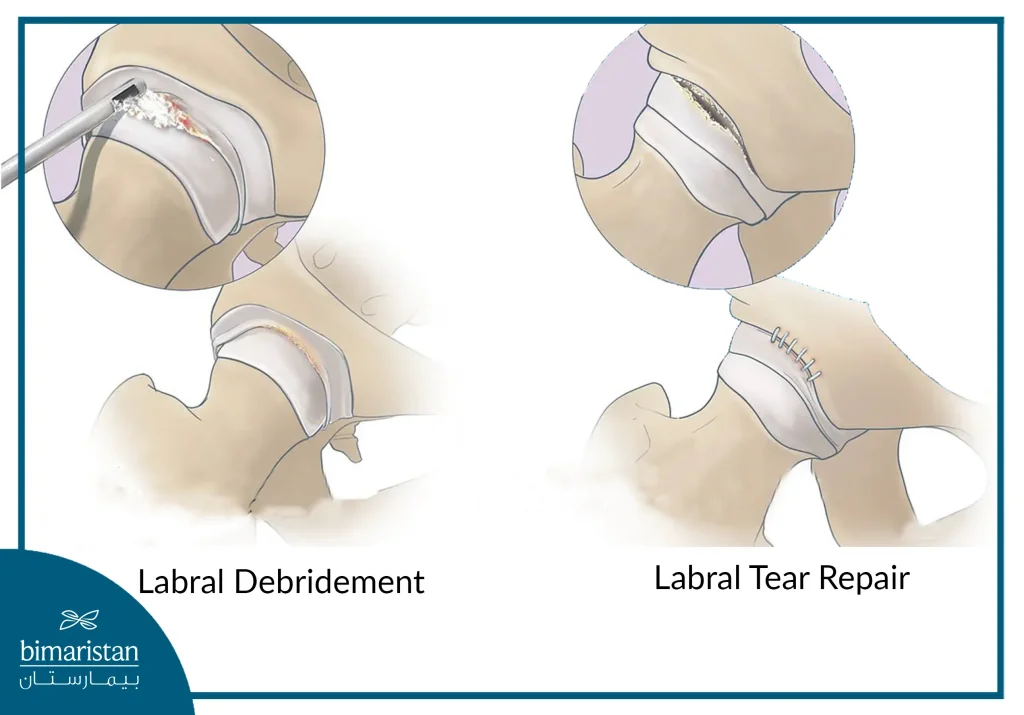
How Is hip arthroscopy performed?
Hip arthroscopy in Turkey is performed at orthopedic and joint surgery hospitals by orthopedic surgeons or joint surgery specialists.
The hip arthroscopy procedure is usually simple, and the patient can leave the hospital on the same day. However, the patient should stay until the next day to receive the best medical care in the hours following the surgery.
Preparations before hip arthroscopy
the doctor may ask the patient to stop taking some medications that may cause problems during anesthesia or increase bleeding. The patient will also be asked to refrain from eating eight hours before the arthroscopic procedure.
The procedure is usually performed in the operating room under general anesthesia if the patient wishes to sleep during it. However, the patient may be awake during the operation, or general anesthesia may not be appropriate, in which case the doctors resort to local or regional anesthesia.
Doctors can perform hip arthroscopy in two positions: the patient lying on their back (supine) or on their side (lateral position), depending on which side is involved.
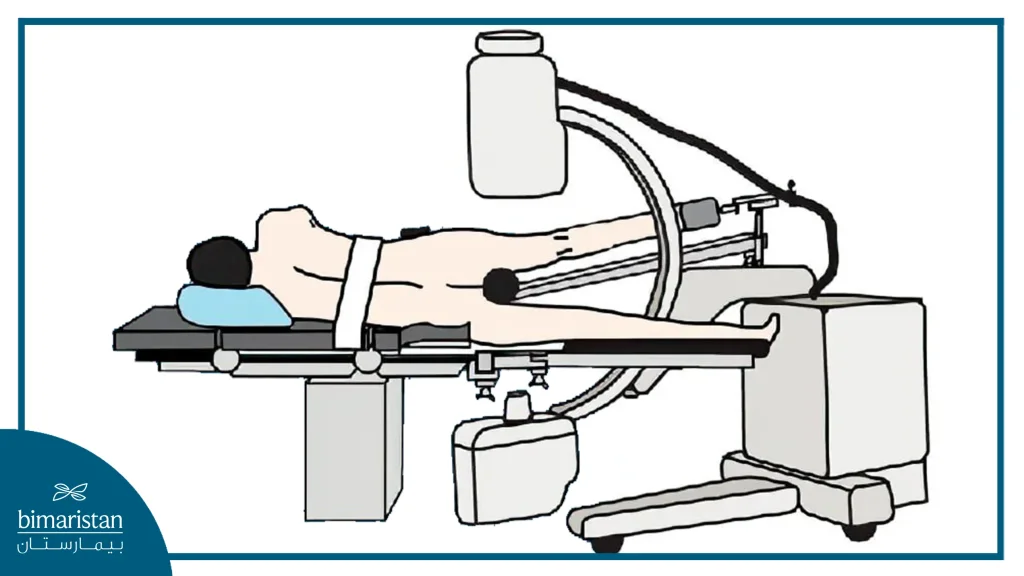
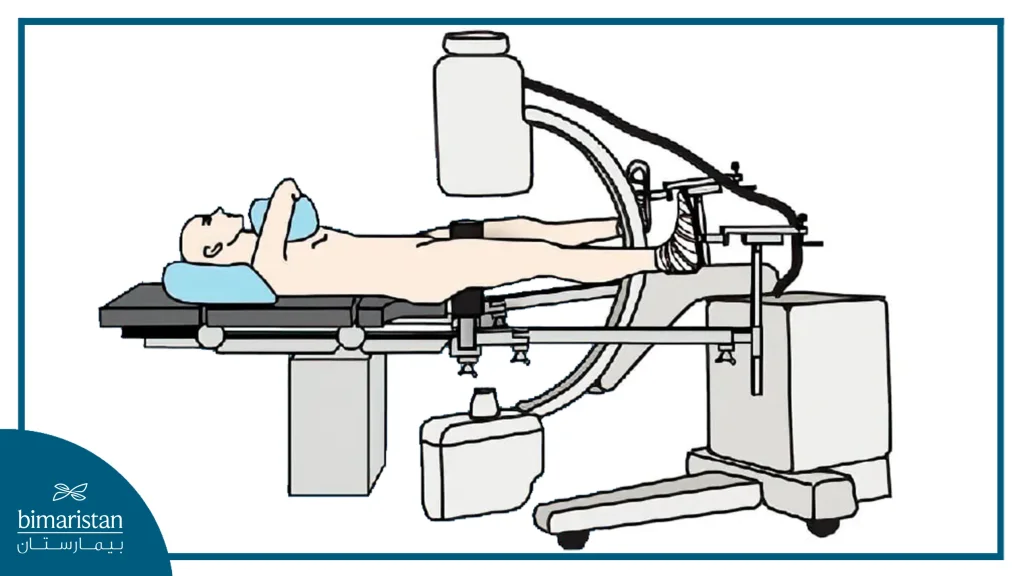
The patient will lie on the operating table, and traction will be applied to their foot to widen the joint space between the femoral head and the acetabulum. This will allow clearer visualization and a larger space for introducing hip arthroscopic instruments from various angles.
The traction process and hip arthroscopy will be fully monitored using a mobile X-ray imaging device called a fluoroscope.
Post-preparation and steps of hip arthroscopy
Initially, the surgeon will make small incisions in specific areas, about a quarter to half an inch wide each. Then, a thin hollow needle will be inserted at the level of the hip joint under fluoroscopic guidance, and fluid will be injected through it to maintain joint space expansion and ensure the femoral head is released from its socket by approximately 1 centimeter, facilitating the passage of surgical instruments and making the procedure smoother.
Next, the surgeon will insert a guiding wire through the previously inserted needle. Once its correct placement is confirmed, the previous needle will be removed. The incision where the guiding wire was inserted will be widened to accommodate wider surgical instruments.
The surgeon will insert a special cannula through the guiding wire into the desired location, then remove the guiding wire and insert the arthroscope through the cannula. This allows the surgical team to visualize the hip joint clearly for exploring and addressing any abnormalities.
For hip joint arthroscopy procedures, arthroscopic instruments will be inserted through other incisions. The location of intervention can be changed by altering the placement of instruments and any incision inserted.
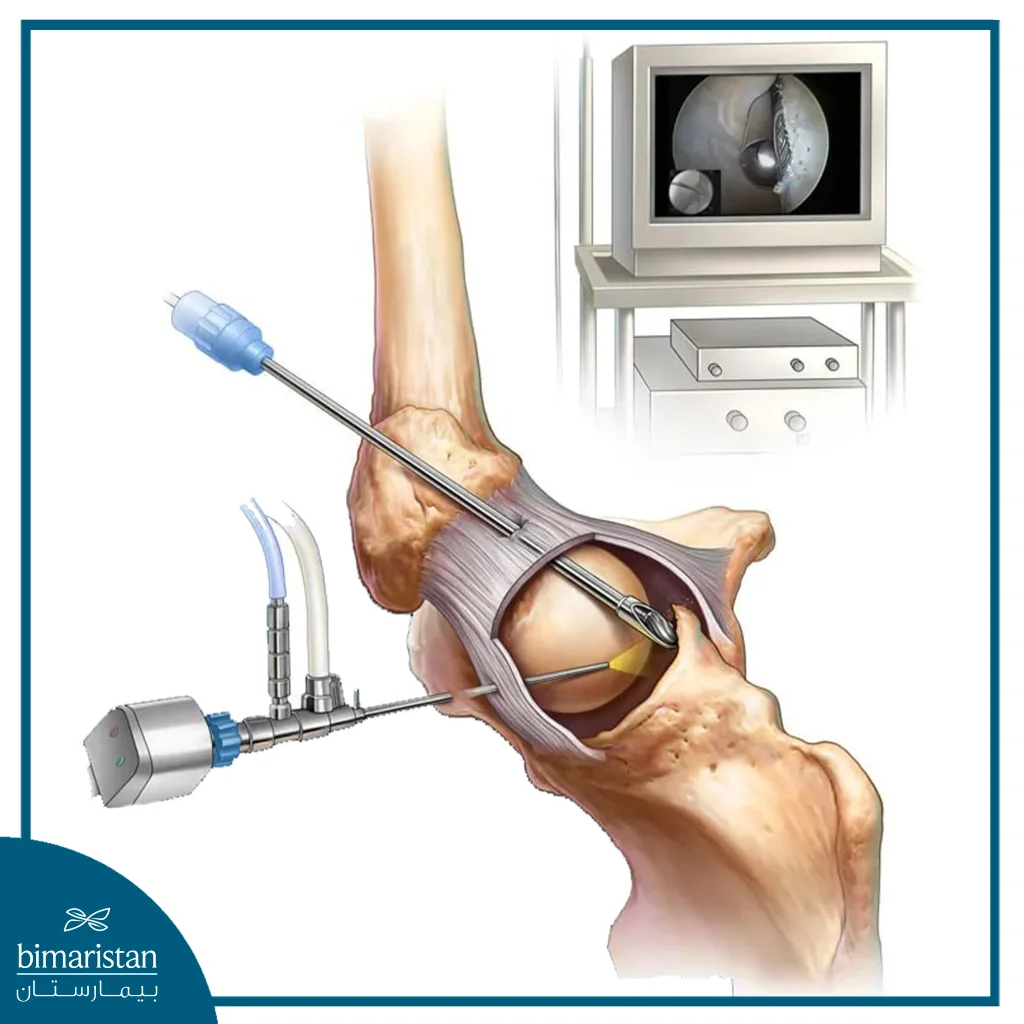
Final steps in hip arthroscopy
Hip arthroscopy typically takes one to two hours (depending on the number and type of injuries in the patient and whether the procedure encountered any complications). When the joint surgeon finishes the procedure, traction to the joint is released, all surgical instruments are withdrawn, and any unwanted fluid in the joint is suctioned.
Depending on their preference and judgment, the surgeon may close the wound with synthetic beads or non-absorbable sutures.
After the hip arthroscopy, the surgeon may prescribe some pain relievers and anti-inflammatory drugs, possibly opting for pain relievers alone. Patients may be advised to wear a hip belt and even use crutches for walking for the first week or two to reduce the load on the hip joint.
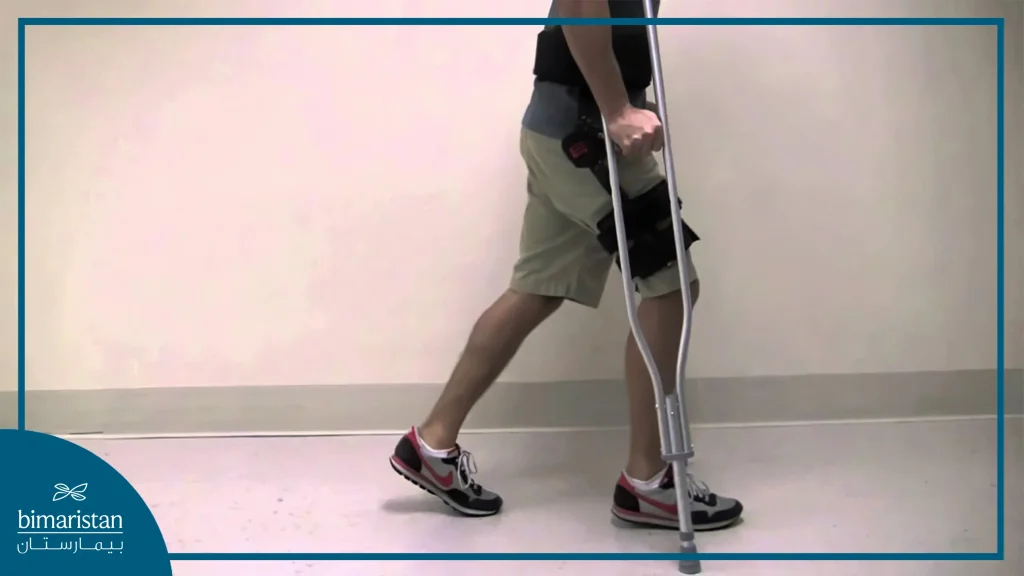
Complications of hip arthroscopy
Complications after hip arthroscopy are almost nonexistent, but there are still some risks and complications after hip joint surgery, including:
- Injury to adjacent nerves: Either due to direct injury by surgical instruments or applied traction. Therefore, doctors prefer to use the most minor traction possible for the shortest time possible. The most commonly affected nerve is the lateral femoral cutaneous nerve.
- Adhesions and residual fluids in the hip joint.
- Anesthesia complications.
- Inflammation at the surgical site (infrequent, about 1%).
- If there is severe wear and tear and if the patient complains of continuous pain preventing sleep and has difficulty walking hip joint replacement surgery may become necessary.
Recovery after hip arthroscopy
Patients can either leave on the same day or stay in the hospital for the day following the procedure. Typically, the effects of anesthesia wear off within two days after hip arthroscopy.
Patients undergoing hip arthroscopy need to rest for two to six weeks, refraining from strenuous activities while performing their daily functions normally.
Patients will require physical therapy for several weeks or months, and after 3 to 6 months, the pain accompanying movement will disappear, and the patient will return to their normal condition.
In conclusion, hip arthroscopy is the future of hip joint surgery; it is minimally invasive, safe, and involves minimal complications, ensuring athletes can return to their activities in the shortest time and with minimal complications.
References:
- Hip Arthroscopy-OrthoInfo-AAOS.
- Basic Hip Arthroscopy: Anatomic Establishment of Arthroscopic Portals Without Fluoroscopic Guidance.


